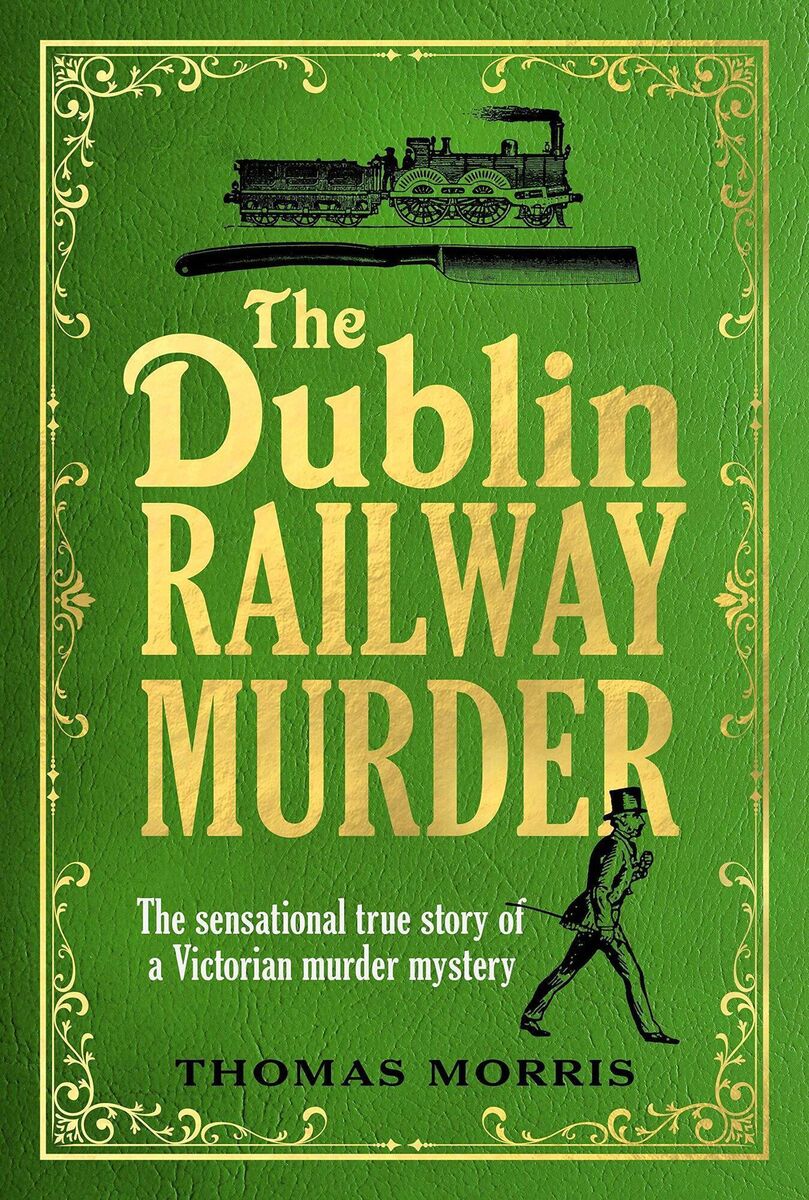Book review: The Dublin Railway Murder is an engrossing read about true crime

Thomas Morris. Picture: Charlotte Machin
DUBLIN in 1856 is the world of this captivating work of historical research, where some of the incidental details are as memorable as the brutal murder that lies at its centre.
George Little was the chief cashier at Broadstone railway station in Dublin. When his colleagues reported for work one fateful morning in November, 165 years ago, they found he had been brutally beaten and his throat cut so deeply that he was almost decapitated. Stranger still, thousands of pounds in cash, gold and silver were untouched on the desk. It was not until afterwards that it emerged that the murderer did take a sizable chunk of cash on the evening of the barbaric killing.
Thomas Morris leads us through the footsteps of the late George Little’s life to his untimely death. He also brings us through the — alas more plodding — steps of the police investigation.
Long before Morris comments on the fact that the investigation was deeply flawed, he simply describes the arrivals and departures at the murder scene on the morning it was discovered.
As we have become inured, from countless tales of murder, to the basic principle that the scene has to be preserved, it is farcical to read how so many people trampled through the space before the scene could be properly examined.
This was a time when murders such as this were rare and the sensational ripples it sent through Dublin and beyond are well documented here.
There is so much vivid detail packed in to this book, the most insatiable fans of courtroom drama and police procedurals would be satisfied, even as early as the preliminary hearings of the coroner’s court — the pen pictures of the players, their foibles, vanities, turns of phrase, and the pervading decency in many but not all respects.

This was an age — probably still with us — where the public were memorably described by Thomas De Quincey as morbidly becoming “murder fanciers”.
The social history of the time is fascinating. Detectives were suspected by the public of being “G men”, a vestige of the Dublin Castle G division, where the government sniffed out nascent nationalist movements.
As the investigation dragged on, there were advocates for exhuming the body of the deceased in the belief that the image of the murderer could be found imprinted on the retina in the dead man’s eyes. One railway worker brought a clairvoyant to the station in the hope of communicating with the deceased and gathering clues that had eluded detectives.
It is tempting to describe in detail how the investigation and trial unfolded, but that would spoil an engrossing read.
When police hear of powerful evidence from a woman about her husband in the case there is an intractable legal problem: “By marriage, the husband and wife are one person in law: that is, the very being or legal existence of the woman is suspended during the marriage, or at least is incorporated and consolidated into that of the husband.”
Then there is the phrenologist who believes he can tell the accused’s propensity for murder by certain angles of compartments within the brain.
There is such colourful detail, not least that one of the justices had a youthful romance with Jane Austen and may have been the inspiration for her immortal Mr Darcy. There is so much more in this very well chosen and thoroughly researched true crime from our past.
- The Dublin Railway Murder: The sensational true story of a Victorian murder mystery by Thomas Morris
- Harvill Secker, hb £14.99



